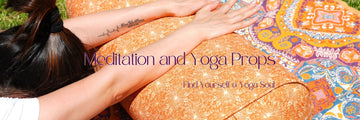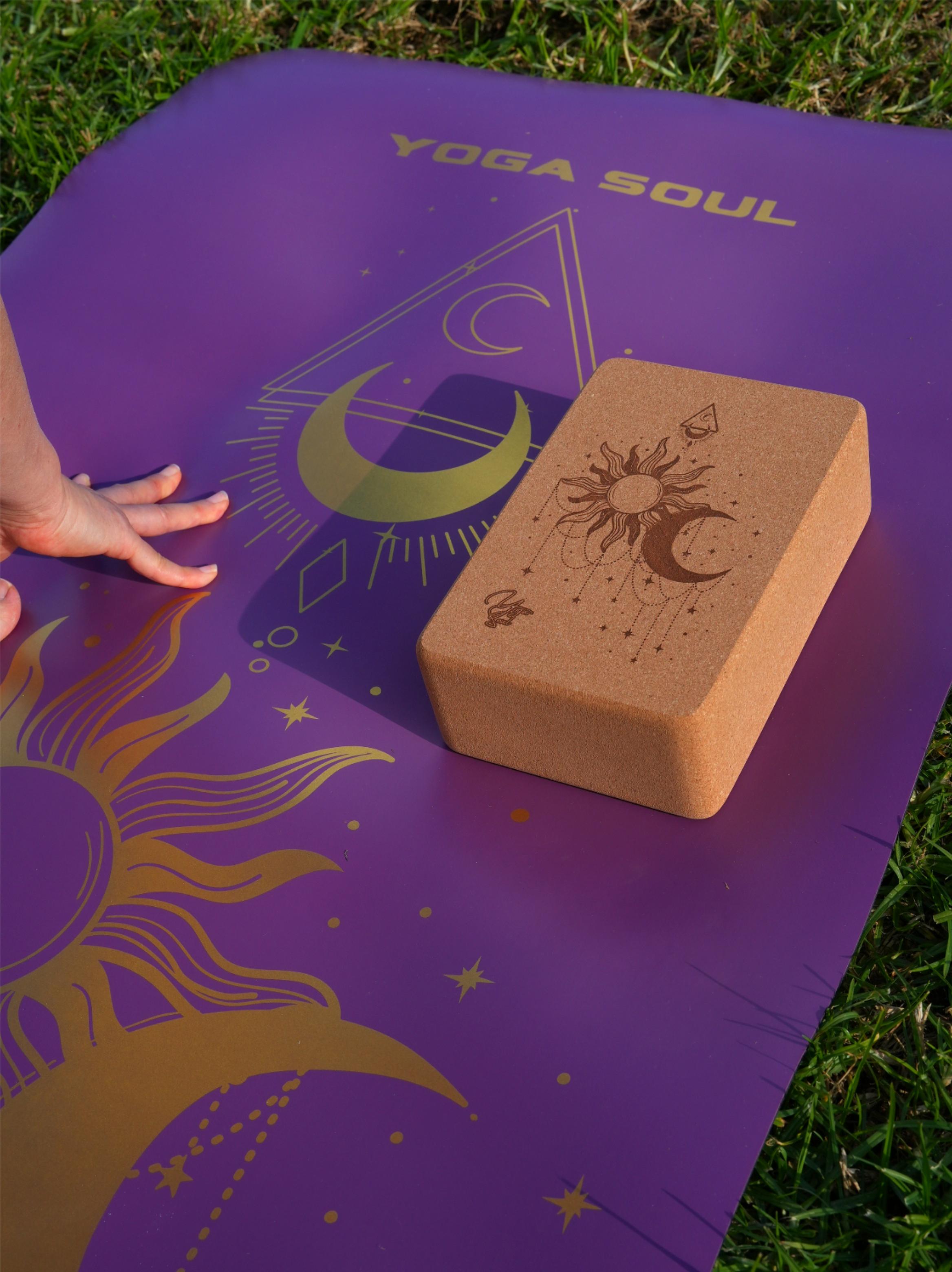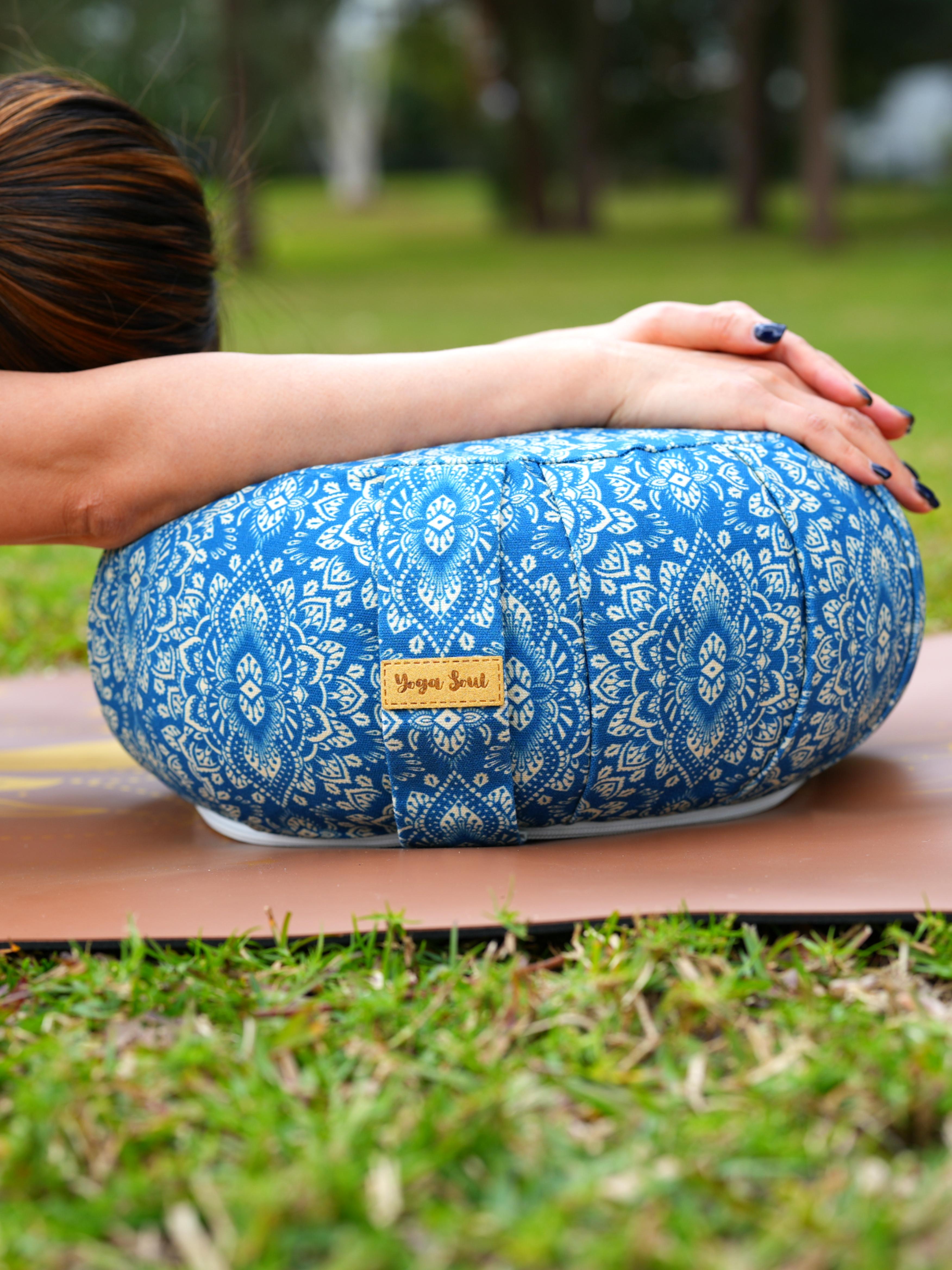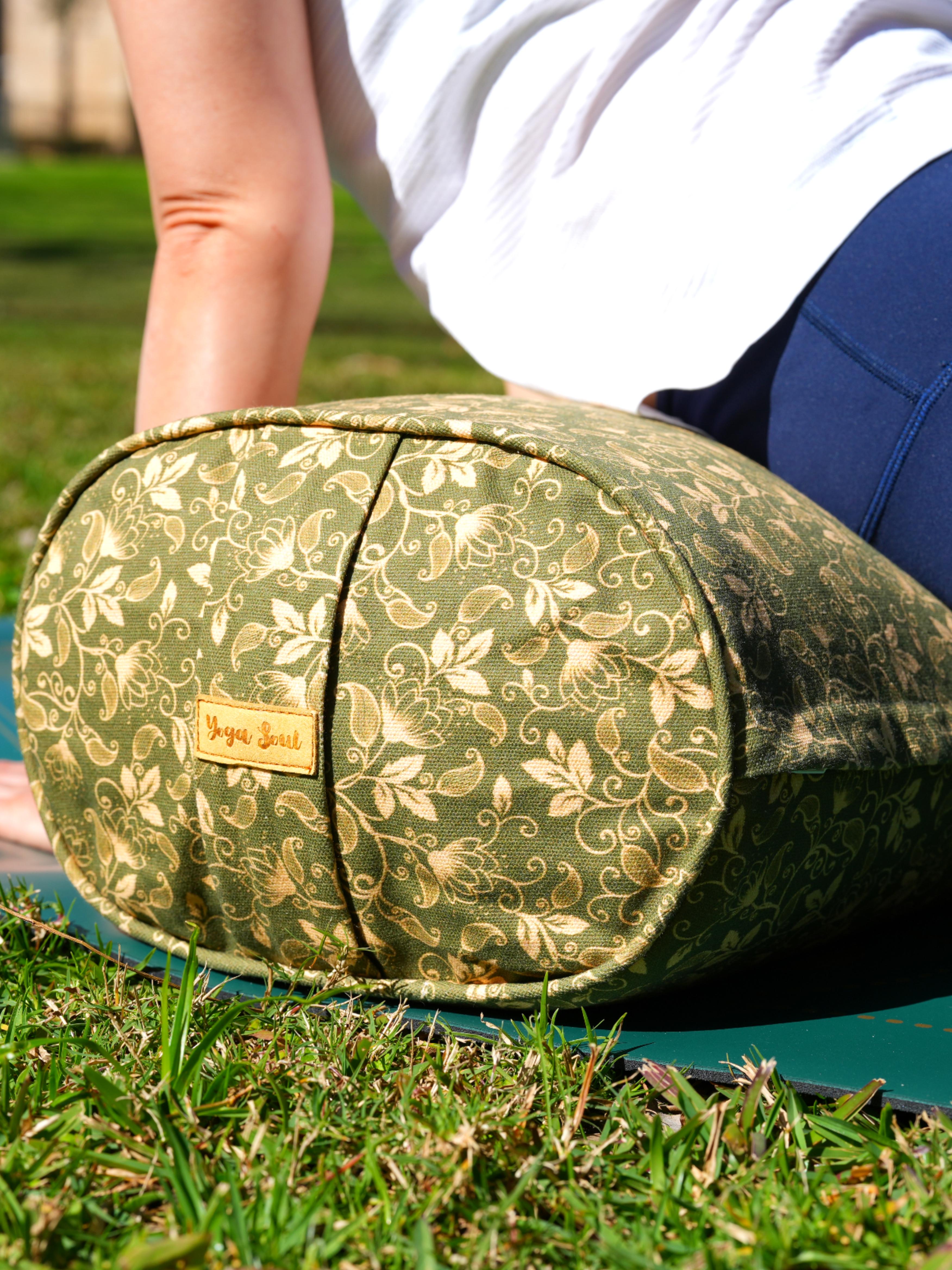How to Choose the Perfect Yoga Mat: Australian Buyer's Guide
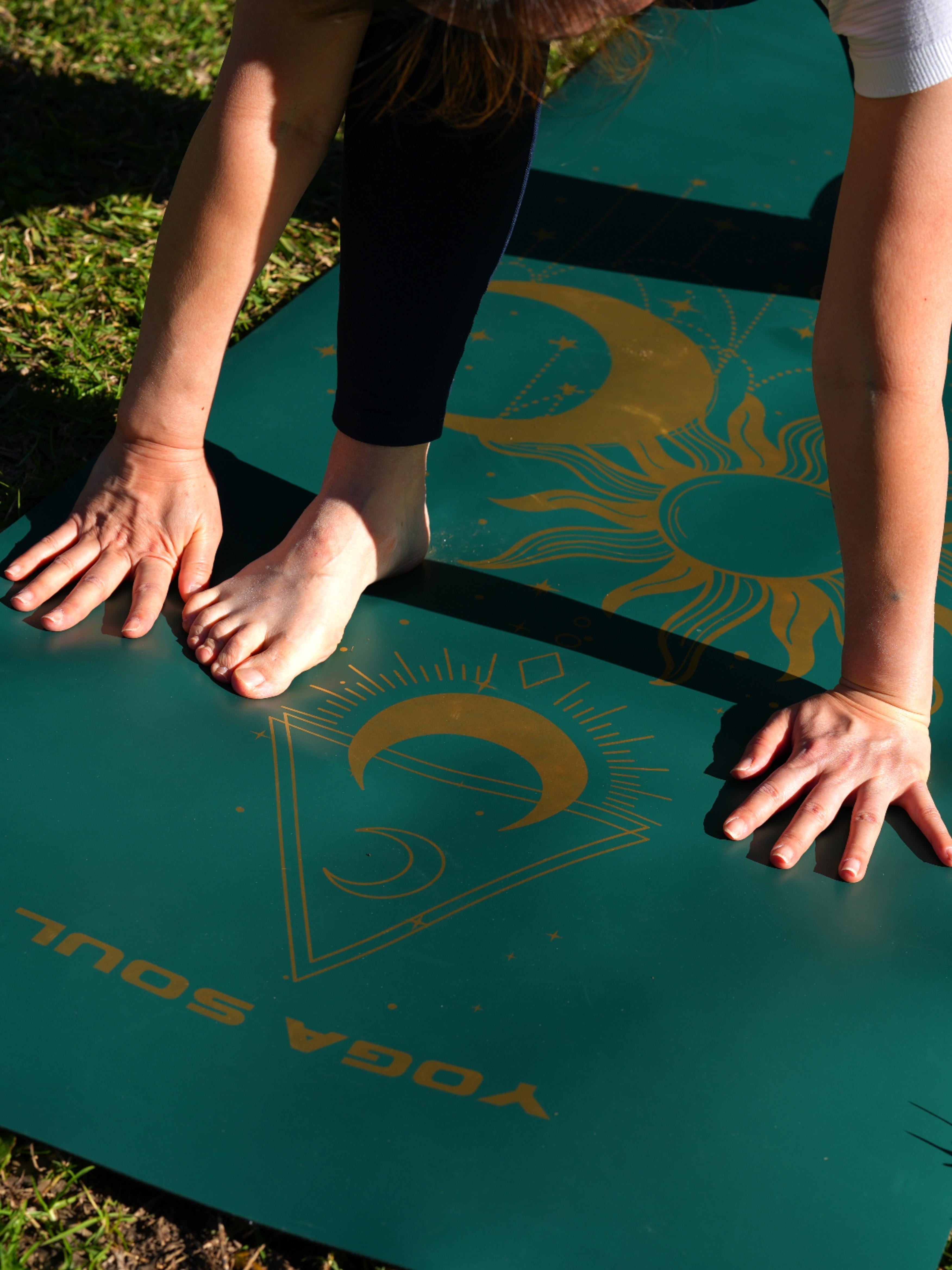
Your yoga mat is more than just a piece of equipment – it's your foundation, your sanctuary, and often your most-used yoga accessory. With countless options available in Australia, choosing the right mat can feel overwhelming. Should you prioritize grip or cushioning? Is eco-friendly worth the extra cost? What thickness works best for your practice style?
This comprehensive guide will help you navigate the Australian yoga mat market, understand what features matter most, and find the perfect mat for your unique needs and budget.
Why Your Yoga Mat Choice Matters
The right yoga mat can make the difference between a frustrating practice and a transformative one. A quality mat provides:
- Safety through stability – preventing slips and falls
- Joint protection – cushioning knees, wrists, and spine
- Hygiene benefits – creating a clean barrier between you and shared surfaces
- Practice definition – establishing your personal space
- Consistency – familiar feel and support across different environments
Conversely, the wrong mat can cause distractions, discomfort, or even injury. That's why taking time to choose thoughtfully is crucial for your yoga journey.
Key Features to Consider
Yoga Mat Thickness Guide
| Thickness | Best For | Pros | Cons | Australian Climate Notes |
|---|---|---|---|---|
| 1.5-2mm | Travel, advanced practitioners | Excellent ground connection, lightweight | Minimal cushioning | Great for hot climates, less insulation |
| 3-4mm | Most practitioners, general classes | Balanced stability & cushioning | May lack joint support | Standard choice for most Australian conditions |
| 5-6mm | Beginners, restorative yoga | Maximum comfort, joint protection | Can affect balance, heavier | Consider ventilation in humid areas |
| 8-10mm | Therapeutic use, meditation | Ultimate cushioning | Very heavy, unstable for standing | Best for indoor use in climate-controlled spaces |
Material Performance Comparison
| Material | Grip When Dry | Grip When Wet | Durability | Eco-Rating | Price Range (AUD) | Best Australian Climate |
|---|---|---|---|---|---|---|
| PVC | Excellent | Excellent | Very High | Low | $30-120 | All climates |
| Natural Rubber | Very Good | Excellent | High | High | $80-200 | Hot/humid, versatile |
| TPE | Good | Good | Medium | Medium | $40-100 | Temperate areas |
| Cork | Fair (when dry) | Very Good | High | Very High | $90-180 | Hot yoga, humid areas |
| Jute/Hemp | Poor (when dry) | Excellent | Medium | Very High | $50-130 | Hot yoga only |
Australian Climate Considerations
| Region | Climate Type | Recommended Materials | Key Features to Prioritize | Avoid |
|---|---|---|---|---|
| Brisbane/Darwin | Hot & Humid | Natural rubber, textured cork | Antimicrobial, quick-dry, wet grip | Smooth PVC, non-textured |
| Perth/Adelaide | Hot & Dry | High-quality PVC, TPE | UV resistance, durability, thickness | Materials that crack in heat |
| Melbourne/Sydney | Temperate | Most materials work | Versatility, good storage | Extreme specialization |
| Hobart | Cool/Variable | Focus on comfort | Cushioning, warmth retention | Ultra-thin options |
Price vs. Value Analysis
| Price Range (AUD) | Expected Lifespan | Cost Per Month | Quality Level | Best For |
|---|---|---|---|---|
| $20-50 | 6-12 months | $1.70-8.30 | Basic | Trying yoga, very occasional use |
| $50-120 | 1-3 years | $1.40-10.00 | Good | Regular practitioners, most people |
| $120-250 | 3-5+ years | $2.00-6.95 | Premium | Serious practitioners, eco-conscious |
| $250+ | 5+ years | $4.15+ | Luxury | Professional teachers, specific needs |
Material: Performance and Values Aligned
The material of your mat affects grip, durability, comfort, and environmental impact.
PVC (Polyvinyl Chloride):
- Pros: Excellent grip, durable, easy to clean, affordable
- Cons: Not eco-friendly, can contain harmful chemicals
- Best for: Budget-conscious practitioners prioritizing performance
Natural Rubber:
- Pros: Superior grip, biodegradable, durable, excellent cushioning
- Cons: Heavier, rubber smell initially, not suitable for latex allergies
- Best for: Eco-conscious practitioners, hot yoga, sweaty practices
TPE (Thermoplastic Elastomer):
- Pros: Eco-friendly alternative to PVC, lightweight, recyclable
- Cons: Less durable than PVC or rubber, moderate grip
- Best for: Environmentally conscious beginners
Cork:
- Pros: Naturally antimicrobial, unique texture, sustainable
- Cons: Can be slippery when dry, requires break-in period
- Best for: Those wanting natural materials, unique aesthetics
Jute/Hemp:
- Pros: Completely natural, biodegradable, good grip when damp
- Cons: Rough texture, requires moisture for grip, limited cushioning
- Best for: Hot yoga, eco-warriors, those preferring natural textures
Grip and Texture: Staying Safe and Stable
Grip is crucial for safety and confidence in your practice:
Smooth surface:
- Provides consistent feel
- Easy to clean
- May be slippery when wet
- Good for gentle practices
Textured surface:
- Enhanced grip
- Better moisture management
- May feel rough initially
- Ideal for dynamic practices
Australian considerations: Our diverse climate means you might encounter humidity, heat, or air conditioning that affects grip. Choose accordingly based on your primary practice environment.
Size: Standard vs. Extended Options
Standard size (183cm x 61cm):
- Suitable for most practitioners under 6 feet tall
- Easier to transport and store
- More affordable options available
Long mats (200cm+ x 61cm):
- Better for taller practitioners
- More space for flowing sequences
- Heavier and more expensive
Wide mats (183cm x 66cm+):
- Extra space for arm movements
- Good for broader body types
- Limited availability in Australia
Climate Considerations for Australian Practitioners
Australia's diverse climate zones require specific considerations:
Hot and Humid Conditions
Brisbane, Darwin, Northern Australia:
- Prioritize grip when wet
- Choose materials that don't become slippery with moisture
- Consider antimicrobial properties
- Look for mats that dry quickly
Recommended materials: Natural rubber, textured surfaces, cork (once broken in)
Dry and Hot Conditions
Perth, Adelaide, Inland Areas:
- Focus on durability against heat
- Consider UV resistance for outdoor practice
- Avoid materials that crack in dry conditions
- Thickness matters more for comfort on hard surfaces
Recommended materials: High-quality PVC, TPE, thick options
Temperate Conditions
Melbourne, Sydney, Hobart:
- Versatile mats work well
- Consider indoor vs. outdoor primary use
- Storage in varying conditions
- Condensation resistance if practicing in garages/sheds
Recommended materials: Most materials work well, choose based on personal preference
Eco-Friendly Options: Sustainable Choices for Australian Yogis
With growing environmental awareness, many Australian yogis prioritize sustainable options:
Truly Sustainable Materials
Natural rubber:
- Biodegradable (eventually)
- Renewable resource
- Durable (reduces replacement needs)
- Often fair-trade sourced
Cork:
- Harvested without harming trees
- Naturally renewable
- Antimicrobial properties
- Unique Australian connection (we have cork oak trees)
Organic cotton/jute blends:
- Completely biodegradable
- Natural materials
- Often organically farmed
- Support sustainable agriculture
Recycled and Upcycled Options
Some brands offer mats made from:
- Recycled ocean plastic
- Upcycled materials
- Post-consumer waste
- Recycled rubber
Disposal Considerations
When your mat reaches end-of-life:
- Check local recycling programs
- Some brands offer take-back programs
- Upcycle into garden kneelers or padding
- Donate if still usable
Price Points and Value: Australian Market Overview
Understanding the Australian market helps set realistic expectations:
Budget Range ($20-50 AUD)
What to expect:
- Basic PVC or TPE materials
- Standard thickness options
- Limited durability (6-12 months with regular use)
- Suitable for occasional practice or trying yoga
Best for: Beginners unsure of commitment, backup mats, travel
Mid-Range ($50-120 AUD)
What to expect:
- Quality materials (good PVC, basic rubber, TPE)
- Better durability (1-3 years)
- More color and style options
- Suitable for regular practice
Best for: Committed beginners, regular practitioners, most yoga styles
Premium Range ($120-250 AUD)
What to expect:
- High-quality natural materials
- Superior grip and cushioning
- Excellent durability (3-5+ years)
- Often eco-friendly options
- Brand reputation and warranties
Best for: Serious practitioners, eco-conscious yogis, specific needs
Luxury Range ($250+ AUD)
What to expect:
- Top-tier materials and construction
- Unique designs or technologies
- Maximum durability
- Premium brand status
- Special features (extra length, unique materials)
Best for: Professional teachers, luxury preference, specific requirements
Testing Before Buying: What to Look For
In-Store Testing Tips
Feel the texture:
- Run your hands across the surface
- Test grip with slight pressure
- Check if texture is comfortable on skin
Assess thickness:
- Press knees into mat
- Test comfort level
- Consider your joint sensitivity
Check stability:
- Step onto mat
- Test balance on one foot
- Notice any sliding or instability
Online Shopping Considerations
When buying online:
- Read detailed material descriptions
- Check return policies
- Look for video demonstrations
- Read reviews from similar practitioners
- Consider starter packs with trial periods
Common Mistakes Australian Buyers Make
Choosing Based on Appearance Alone
Beautiful patterns don't guarantee performance. Prioritize function over form, especially for your first mat.
Not Considering Climate
What works in air-conditioned studios might not work in hot outdoor classes or humid climates.
Ignoring Transportation Needs
Heavy mats become burdensome if you need to carry them regularly. Consider your lifestyle and transport methods.
Skipping the Break-in Period
Many mats improve with use. Natural materials especially need time to reach optimal grip.
Not Reading Care Instructions
Proper care extends mat life significantly. Some materials have specific cleaning requirements.
Specialty Mats for Specific Practices
Hot Yoga Mats
Essential features:
- Superior grip when wet
- Quick-drying materials
- Antimicrobial properties
- Easy cleaning
Recommended materials: Natural rubber, specific hot yoga blends
Travel Mats
Essential features:
- Lightweight (under 1kg)
- Foldable or ultra-thin
- Good grip despite thinness
- Compact storage
Recommended materials: Natural rubber travel versions, thin PVC
Meditation Mats
Essential features:
- Extra cushioning
- Larger size for sitting
- Comfortable texture
- Stability for long holds
Recommended materials: Thick options, natural materials
Breaking in Your New Mat
Most mats perform better after a break-in period:
Initial Cleaning
- Wipe down with appropriate cleaner
- Allow to air dry completely
- Remove any manufacturing residue
Gradual Use
- Start with gentle practices
- Allow grip to develop naturally
- Avoid harsh chemicals initially
Patience with Natural Materials
- Cork and rubber mats especially need time
- Grip improves with regular use
- Natural smell typically fades
Maintenance for Australian Conditions
Daily Care
After each practice:
- Wipe with damp cloth
- Air dry before rolling
- Check for wear spots
Weekly Deep Clean
Cleaning solutions:
- Mild soap and water for most mats
- Specialized mat cleaners
- Natural options (diluted vinegar, tea tree oil)
Drying considerations:
- Avoid direct harsh sunlight (can degrade materials)
- Ensure complete drying (prevents mold in humidity)
- Good ventilation helps
Storage Tips
Australian climate storage:
- Cool, dry place preferred
- Avoid car storage in heat
- Roll loosely to prevent permanent curves
- Consider hanging storage in humid areas
Making the Final Decision
Priority Assessment
Consider your priorities in order:
- Safety and grip – Non-negotiable for injury prevention
- Comfort level – Must support your practice style
- Durability needs – Based on practice frequency
- Environmental values – If eco-friendliness matters to you
- Budget constraints – Realistic about what you can spend
- Aesthetic preferences – Nice to have, but not essential
Trial and Error Approach
Consider starting with a mid-range option that covers basics well, then upgrading once you understand your specific needs better.
Investment Perspective
A quality mat used 3-4 times per week for two years costs roughly $1-2 per session. This perspective often justifies investing in better quality.
Red Flags to Avoid
Too-Good-to-Be-True Pricing
Extremely cheap mats often compromise on:
- Material safety
- Durability
- Performance
- Manufacturer support
Unclear Material Information
Avoid mats where the seller can't clearly state:
- Exact materials used
- Country of manufacture
- Care instructions
- Safety certifications
No Return Policy
Reputable sellers stand behind their products with reasonable return policies.
Building Your Mat Collection
Many serious practitioners eventually own multiple mats:
Home practice mat:
- Heavier, more cushioned
- Larger size acceptable
- Premium materials justified
Studio/travel mat:
- Lighter weight priority
- Standard size
- Easy to clean
Specialty mat:
- Hot yoga specific
- Outdoor practice
- Meditation focused
Supporting Australian Businesses
Consider supporting local businesses when possible:
Benefits of local purchase:
- Support Australian economy
- Easier returns and exchanges
- Local climate understanding
- Reduced shipping environmental impact
- Better customer service
Finding local suppliers:
- Independent yoga studios often sell mats
- Local sporting goods stores
- Australian-owned online retailers
- Yoga teacher recommendations
Conclusion
Choosing the perfect yoga mat is a personal decision that depends on your practice style, physical needs, values, and budget. There's no single "best" mat – only the best mat for you.
Start by honestly assessing your primary needs: grip, cushioning, portability, environmental impact, or budget. Then prioritize these factors when evaluating options.
Remember that your needs may evolve as your practice develops. What works as a beginner might not suit you as an intermediate practitioner. Don't be afraid to upgrade when the time is right.
Most importantly, don't let the search for the perfect mat delay starting your practice. A decent mat is far better than no mat, and you can always upgrade as you learn more about your preferences.
Your yoga mat is an investment in your health, well-being, and spiritual practice. Take time to choose thoughtfully, but don't let perfect be the enemy of good. The most important step is rolling out your mat and beginning your practice.
Ready to find your perfect yoga mat? Explore our curated collection of high-quality mats suited for Australian conditions and practitioners at every level.
Happy mat hunting! Remember, the best yoga mat is the one you actually use. Choose quality, but don't forget that the magic happens when you step onto your mat and begin to practice.

